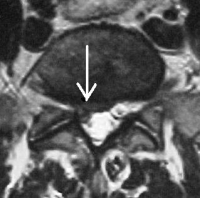An Overview of
The lumbar microdiscectomy procedure is designed for a herniated disc in the lumbar spine. It is quite simple. A small incision is made midline over the spinous process at the level of the herniation. The multifidi muscle is moved to the side and held with a retractor. The edge of the lamina (the back bottom of the vertebra) is exposed and identified with x-ray.
A small burr is used (like a dremel for those mechanically inclined) to take off about 3-4 mm of bone on the side of the lamina. Don’t worry as you won’t miss it. There is a thick ligament under this called the ligamentum flavum. It is a vestigial ligament (one that might have served a purpose in prehistoric times but does not now). A portion of it is removed and the nerve root is exposed.
The nerve root is about the diameter of your little finger. The root is neurolysed from the herniation. This means that the very sticky herniated disc material is carefully pulled away from the nerve and any small adhesions are disengaged. The nerve is gently rolled to the side, exposing the herniation itself or the hernia sac if the hernia material is encapsulated.
The herniation is removed. Sometimes there is one large fragment and other times multiple small fragments. There is always a tear in the back wall of the disc that allowed the herniation to exit from. That hole is probed with a small grabbing device (a pituitary) and any loose fragments still in the disc are removed. The disc is then irrigated to wash out any other loose fragments. A small probe is used under the nerve to make sure there are no hidden fragments.
At the end of the procedure, the nerve should be resting undisturbed in its normal anatomic position and should be able to move about 1 cm. A Valsalva maneuver is done to make sure there is no leak of fluid from the nerve sac (very rare) and the incision is closed.
A question should come to you now. “Why don’t you repair the tear in the back of the disc to prevent future herniations?” The answer comes from the discussion of the anatomy of the wall of the disc (discussed elsewhere in this web site). There is no blood supply to the disc so there is no opportunity to heal. Just like a tear of an ACL ligament in the knee won’t heal, the disc wall will not repair itself. The tear is permanent. This is why there is about a 10% chance of recurrent herniations from the original tear in the disc. A recurrent herniation can occur with previous surgery or even if there has been no surgery at all.
For more information on lumbar microdiscectomy, please contact spine surgeon and back pain specialist Dr. Donald Corenman at his Vail, Aspen, Denver and Grand Junction, Colorado area office.

